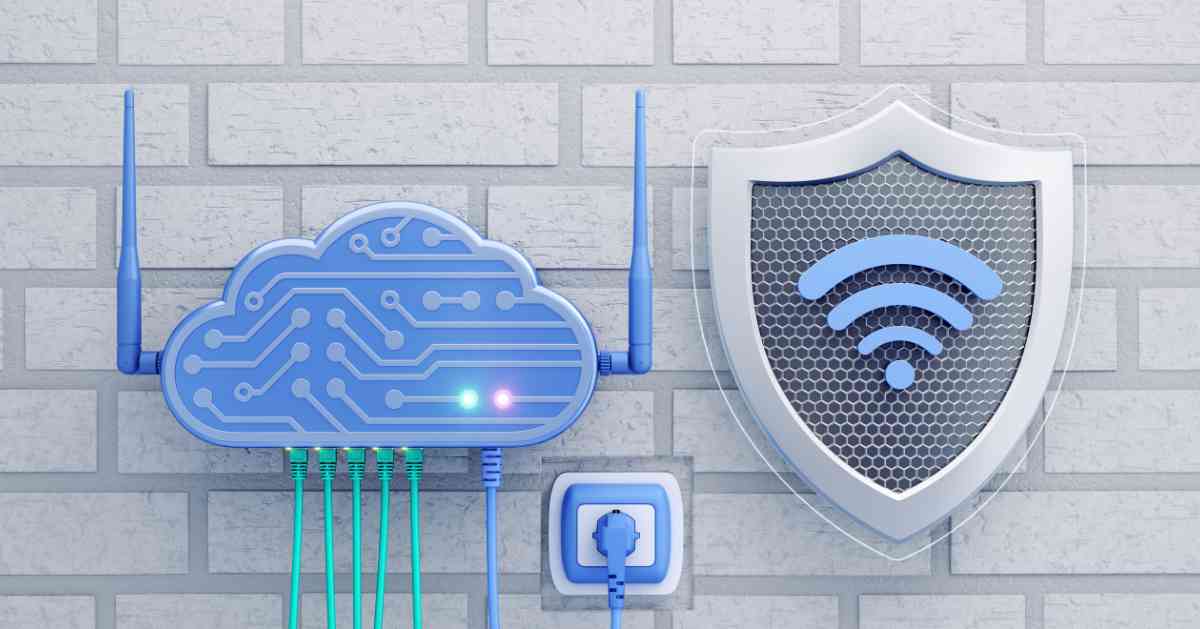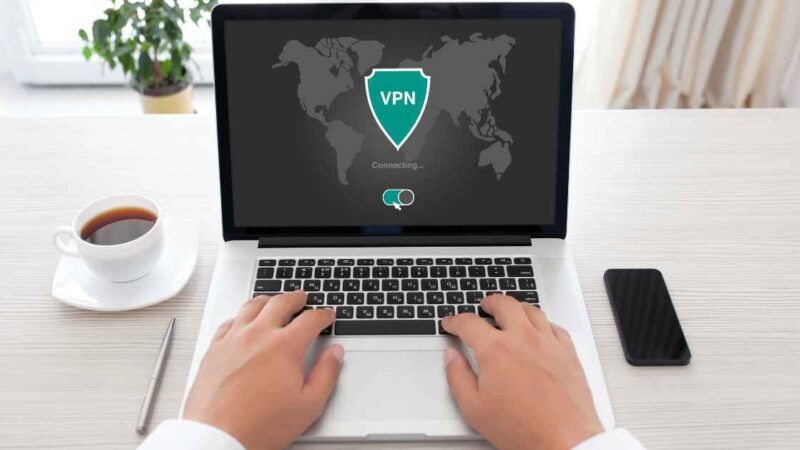Strategies for Connecting with Your Remote Team

In an era where remote work transcends geographical boundaries, mastering the art of connection without physical presence becomes an art form itself. Imagine weaving through the digital ether, crafting bonds stronger than the Wi-Fi signal that supports them. This isn’t just about overcoming distance; it’s about redefining closeness in the remote work era. With the right strategies, you can transform your remote team from a group of scattered individuals into a closely-knit powerhouse, thriving on collaboration and mutual support. Let’s embark on this journey of virtual connection, exploring the art and science of bringing your remote team together, no matter the miles apart.
Why Virtual Team Building is Your New Best Friend
In the quest to conquer the coldness of distance, virtual team building emerges as the knight in digital armor. It’s not just an alternative to traditional in-office bonding; it’s a necessity in today’s remote work environment. But why, you ask?
First, it breaks down the physical barriers, allowing spontaneity and personality to shine through. Imagine a world where your morning begins not with a silent inbox but with lively banter in a virtual coffee break. These moments of shared laughter and stories weave a strong fabric of connection, making every team member feel part of something bigger than their home office.
Secondly, it cultivates a culture of open communication. When team members feel connected, they’re more likely to share ideas, voice concerns, and contribute to a collective problem-solving effort. This openness leads to innovation, driving your team to achieve more than they could individually.
Lastly, it’s about embracing diversity. Remote work brings together people from different cultures, time zones, and backgrounds. Virtual team building celebrates this diversity, turning it into one of your team’s greatest strengths. Through carefully chosen activities, team members learn about each other’s cultures, fostering an environment of mutual respect and understanding.
The Art of Asynchronous Communication
Asynchronous communication, the backbone of remote work, allows team members to engage in dialogue without the need for simultaneous presence. This freedom can boost productivity and flexibility but also demands a mastery of clear, effective communication.
Firstly, clarity is king in the realm of asynchronous interactions. Every email, message, or document should be self-explanatory, leaving little room for ambiguity. This might mean over-communicating at times, providing context, and anticipating questions that might arise.
Secondly, leveraging the right tools can transform asynchronous communication from a challenge into a superpower. Platforms like Slack, Asana, or Trello enable organized, thread-based discussions where conversations can be easily tracked and revisited. Integrating these with video messaging tools, like Loom, allows for more personalized and detailed communication without requiring real-time interaction.
Lastly, setting expectations around response times creates a respectful and productive communication environment. It’s important to recognize that remote work often comes with varied schedules, so establishing clear norms for when and how to respond to different types of communication can alleviate pressure and prevent burnout.
Mastering the Virtual Meeting: Beyond the Basics
While asynchronous communication forms the fabric of remote collaboration, virtual meetings add the necessary stitches to keep the team cohesive. Yet, without the right approach, these meetings can turn into tiresome, unproductive sessions.
An effective virtual meeting starts with a clear, concise agenda shared in advance. This not only sets expectations but also allows participants to prepare, ensuring a focused and efficient discussion.
Engagement is another critical factor. In a virtual setting, it’s easy for participants to become passive observers. Incorporating interactive elements, such as polls, breakout rooms, or even simple check-ins at the start of the meeting, can foster a sense of involvement and presence.
Follow-up actions seal the deal. Concluding each meeting with a summary of decisions made, tasks assigned, and deadlines agreed upon ensures that everyone leaves with a clear understanding of their responsibilities. This follow-through transforms discussions into actionable outcomes, driving progress and accountability.
Building Trust Virtually: Beyond the Screen
In the digital workspace, trust is the currency that powers team dynamics, driving collaboration and fueling productivity. Building this trust virtually requires deliberate actions and strategies to bridge the physical divide.
Key to cultivating trust is transparency. This means clear, open communication about project statuses, individual responsibilities, and team objectives. When team members understand the bigger picture and see how their contributions fit in, a sense of ownership and trust naturally develops.
Reliability strengthens this foundation of trust. Consistency in meeting deadlines, showing up for meetings, and following through on commitments speaks louder than any promise. It reassures team members that they can count on one another, fostering a dependable team environment.
Creating shared goals is another powerful tool for building trust. When the entire team is aligned towards a common objective, individual efforts feel more meaningful. Celebrating milestones and recognizing contributions towards these goals reinforces a culture of mutual respect and trust.
Transparent Leadership: The Key to Remote Team Success
Leadership transparency is crucial in remote teams. It’s about more than just keeping team members in the loop; it’s about cultivating an environment where openness is valued and encouraged.
Leaders should lead by example, sharing not only successes but also challenges and failures. This vulnerability shows that it’s okay not to have all the answers, encouraging a culture where learning from mistakes is a shared journey.
Regular updates, whether through email, video messages, or virtual town halls, help maintain a sense of connection and involvement. They ensure that every team member feels informed and valued, reinforcing their trust in the leadership and the organization’s direction.
Open communication channels are vital. Leaders should encourage feedback and create safe spaces for team members to express concerns or ideas. This two-way communication fosters an environment of trust, where team members feel heard and respected.
Essential Tools for Remote Team Collaboration
The digital landscape offers a plethora of tools designed to simulate a connected workspace, each serving as a bridge over the vast expanse of cyberspace that separates remote teams. Identifying and utilizing these tools is pivotal in crafting a productive and cohesive remote working environment.
Communication tools like Slack and Microsoft Teams become the virtual watercooler, offering spaces for casual exchanges alongside formal discussions. These platforms facilitate instant messaging, video calls, and file sharing, ensuring that team members remain connected regardless of their physical locations.
Project management tools such as Asana, Trello, and Monday.com, provide visual boards to track tasks and projects, making collaboration transparent and progress measurable. They enable team members to see the big picture at a glance, understand their contributions, and stay aligned with the team’s goals.
Cloud storage and document collaboration platforms like Google Drive and Dropbox Paper allow for real-time editing, commenting, and sharing of documents. This capability ensures that everyone has access to the latest versions of files, fostering a dynamic and collaborative work environment.
Creating a Seamless Tech Ecosystem for Your Team
While having an arsenal of digital tools is essential, the real magic lies in how these tools are integrated to create a seamless tech ecosystem. A well-integrated set of tools reduces the need to switch contexts frequently, minimizes the risk of information silos, and ensures that the technology serves the team, not the other way around.
Start by mapping out the workflow and identifying the touchpoints between different tasks and processes. This will help determine how tools can be connected to facilitate these transitions. For example, integrating your project management tool with your communication platform can enable automatic updates and notifications, keeping everyone informed in real time.
Also, consider the user experience. Choose tools that are compatible and offer integrations with each other. This compatibility reduces the learning curve and helps in maintaining a streamlined workflow. Many tools offer APIs and built-in integration options, allowing for a customized setup tailored to your team’s specific needs.
Finally, provide training and support. Ensure that every team member is comfortable and proficient with the tools in your tech ecosystem. Regular check-ins and feedback sessions can help identify any issues or areas for improvement, ensuring that your technology stack evolves in line with your team’s needs.
Addressing the Elephant in the Room: Combating Remote Work Isolation
Remote work, while offering flexibility and autonomy, can sometimes lead to feelings of isolation and disconnection. Recognizing and addressing these feelings is crucial for maintaining a healthy and engaged team.
Creating an open environment where team members feel comfortable sharing their feelings is a good starting point. Regular check-ins, not just about work but also about how team members are feeling, can make a big difference. These conversations should be normalized and encouraged, ensuring that everyone knows they’re not alone in their experiences.
Encouraging and facilitating remote mental health resources is another vital strategy. This might involve providing access to online counseling services, organizing workshops on managing stress and isolation, or simply sharing tips and best practices for mental wellbeing.
Lastly, promoting a healthy work-life balance is essential. Encouraging team members to set boundaries, take regular breaks, and disconnect after work can help prevent burnout and mitigate feelings of isolation. It’s about creating a culture that values and respects each individual’s need for personal time and space.
Strategies for Time Zone Management
Navigating the complexities of a globally dispersed team requires a strategic approach to time zone management. The goal is to ensure inclusivity and fairness, making sure every team member feels valued and considered.
One effective strategy is implementing a rotating schedule for team meetings, ensuring that the inconvenience of odd hours is shared rather than shouldered by the same individuals consistently. This promotes a sense of fairness and demonstrates respect for everyone’s time and personal commitments.
Utilizing shared calendars and scheduling tools that display multiple time zones can also significantly ease the process of finding suitable meeting times. Encouraging flexibility in meeting attendance, supplemented by comprehensive meeting notes or recordings, ensures that no one is left out of the loop, even if they can’t attend in real time.
Setting clear expectations around availability and response times is another crucial element. Establishing ‘core hours’ where everyone is expected to be available can facilitate real-time collaboration while allowing for flexibility outside of these hours.
Leveraging Time Zones to Your Advantage
While managing time zones presents challenges, it also offers a unique advantage: the ability to maintain productivity across different times of the day and night. This continuous workflow can be a powerful asset for teams willing to embrace and capitalize on their geographical diversity.
Creating a ‘follow-the-sun’ work model can optimize productivity and accelerate project timelines. By passing tasks across time zones, work can progress around the clock, allowing for faster turnarounds and the ability to address issues in real-time, regardless of where they arise.
Moreover, time zone diversity can enhance global market understanding and customer support. Having team members in different regions not only facilitates coverage across various time zones but also brings valuable insights into local markets and cultures, enriching the team’s overall perspective and approach.
Setting Clear Goals and Expectations in a Remote Environment
In the remote work landscape, the clarity of goals and expectations acts as the compass that guides team efforts towards shared success. Establishing clear objectives not only provides direction but also empowers team members by outlining what success looks like.
Adopting the SMART goals framework ensures that objectives are well-defined and attainable. Specific goals eliminate ambiguity, making it easier for team members to understand their roles and contributions. Measurability allows for tracking progress, while achievability ensures that goals are realistic, fostering motivation rather than frustration. Relevance ties the goals to the larger mission, ensuring that every effort is meaningful, and time-bound objectives keep the team focused and driven towards timely completion.
Communication plays a critical role in this process. Goals should be communicated transparently, with opportunities for team members to ask questions and seek clarification. This open dialogue ensures everyone is on the same page and fully committed to the objectives set.
Tracking and Measuring Performance
Maintaining accountability in a remote setting demands a blend of trust, transparency, and technology. It involves setting up systems that enable team members to showcase their contributions and managers to oversee progress without micromanaging.
Regular check-ins, whether through one-on-one meetings or team updates, provide a forum for discussing progress, obstacles, and support needs. These interactions should be constructive, focusing on solutions and strategies for improvement.
Utilizing digital tools and platforms for tracking progress allows for a visual representation of achievements and areas needing attention. Whether it’s through project management software or performance dashboards, these tools offer a clear view of how individual efforts contribute to the team’s overall objectives.
Feedback systems, incorporating both peer-to-peer and manager-to-employee feedback, play a crucial role in maintaining accountability. Constructive feedback helps in recognizing achievements, addressing challenges, and fostering professional growth, making it an indispensable part of performance management in remote teams.
Continuous Learning: The Remote Workforce’s Path to Advancement
Encouraging and facilitating ongoing education and professional development not only enhances team competencies but also boosts morale and job satisfaction.
Offering access to online courses and webinars enables team members to expand their skillsets and stay abreast of industry trends from the comfort of their homes. Platforms like Coursera, LinkedIn Learning, and industry-specific resources provide a wealth of knowledge across various fields.
Mentorship programs, either within the organization or through external networks, offer personalized guidance and support, helping team members navigate their career paths and overcome professional challenges. These programs foster a culture of learning and collaboration, where knowledge is freely shared and success is a collective achievement.
Work-Life Balance
In the realm of remote work, the lines between personal and professional life can blur, making the establishment of clear boundaries paramount for maintaining work-life balance. For remote workers, this entails delineating a physical and temporal separation between work and leisure.
Creating a dedicated workspace at home helps in mentally separating work from personal life. This space signals to oneself (and household members) that it’s time for work, minimizing distractions and enhancing focus. Equally important is setting strict work hours to mimic the structure of a traditional office environment, signaling when to switch on and off from work mode.
Moreover, leveraging technology to reinforce these boundaries can be effective. Tools that limit notifications after work hours or apps that promote focus during work time can help maintain the balance.
Promoting a Culture of Balance: Leadership’s Role
Leaders play a crucial role in shaping the work culture and expectations around work-life balance in remote teams. By embodying balance themselves, leaders set a precedent for their teams, demonstrating that it’s not only possible but encouraged to maintain a healthy separation between work and personal life.
Implementing policies that promote balance, such as mandatory time off, flexible work hours, and no-emails after work hours, can help solidify this culture. Regular check-ins with team members about their workload and well-being can also ensure that the balance is maintained and that any issues are addressed promptly.
Encouraging the team to take regular breaks throughout the day and to fully disconnect after work hours reinforces the importance of rest and rejuvenation. Recognizing and rewarding productivity rather than long hours worked shifts the focus to efficiency and output, rather than mere presence.
Effective Feedback in a Virtual Environment
Feedback, an essential component of professional development and team dynamics, takes on new nuances in a remote setting. The absence of face-to-face interactions necessitates a thoughtful approach to ensure feedback is both effective and constructive.
Delivering feedback remotely requires clarity to prevent misinterpretation. It’s crucial to be precise about the behaviors or outcomes being addressed, focusing on observable facts rather than perceived intentions. Providing specific examples can help illustrate points clearly, making the feedback more actionable.
Transitioning New Hires into Remote Teams Successfully
The onboarding process sets the tone for a new hire’s journey within an organization, making it crucial for remote teams to get it right from the start. A well-crafted virtual onboarding experience can bridge the physical gap, instilling a sense of belonging and clarity about the organization’s values, expectations, and culture.
Central to this process is a structured yet flexible onboarding plan that outlines the first weeks or months, embodying the essence of effective remote onboarding. This plan should include scheduled meet-and-greets with key team members, training sessions on tools and workflows, and clear milestones for the new hire’s initial period.
Incorporating a mix of synchronous and asynchronous learning opportunities allows new hires to absorb information at their own pace while still feeling connected to the team. Interactive elements, such as virtual tours of the company’s digital workspace or Q&A sessions with different departments, can make the experience more engaging.
A critical aspect of modern remote onboarding includes understanding and implementing mobile device managements, ensuring new hires can securely access company resources from anywhere. Providing comprehensive resources, from detailed guides on company policies to directories of team members and instructions on mobile device management, ensures that new hires have all the information they need at their fingertips. This resource pack can serve as a reference point, reducing uncertainty and boosting confidence.
Mentoring and Integration: Accelerating the Adjustment Period
Mentoring plays a pivotal role in helping new hires navigate their new environment, offering guidance, support, and insight into the company culture and expectations. Structured mentorship programs, where experienced team members are paired with new hires, can facilitate this process, providing a go-to person for questions, advice, and feedback.
An informal buddy system can complement formal mentoring, pairing new hires with peers for a more relaxed introduction to the team and its social dynamics. These buddies can share practical tips on day-to-day operations and help new hires build their internal network.
Regular check-ins with mentors and managers help monitor the new hire’s progress, address any concerns, and adjust the onboarding plan as needed. These touchpoints can provide reassurance and reinforce the feeling of being supported throughout the adjustment period.
By focusing on creating a comprehensive, engaging, and supportive virtual onboarding experience, organizations can ensure that new hires feel valued, informed, and integrated into the team from day one, setting the stage for their success and satisfaction in their new role.





